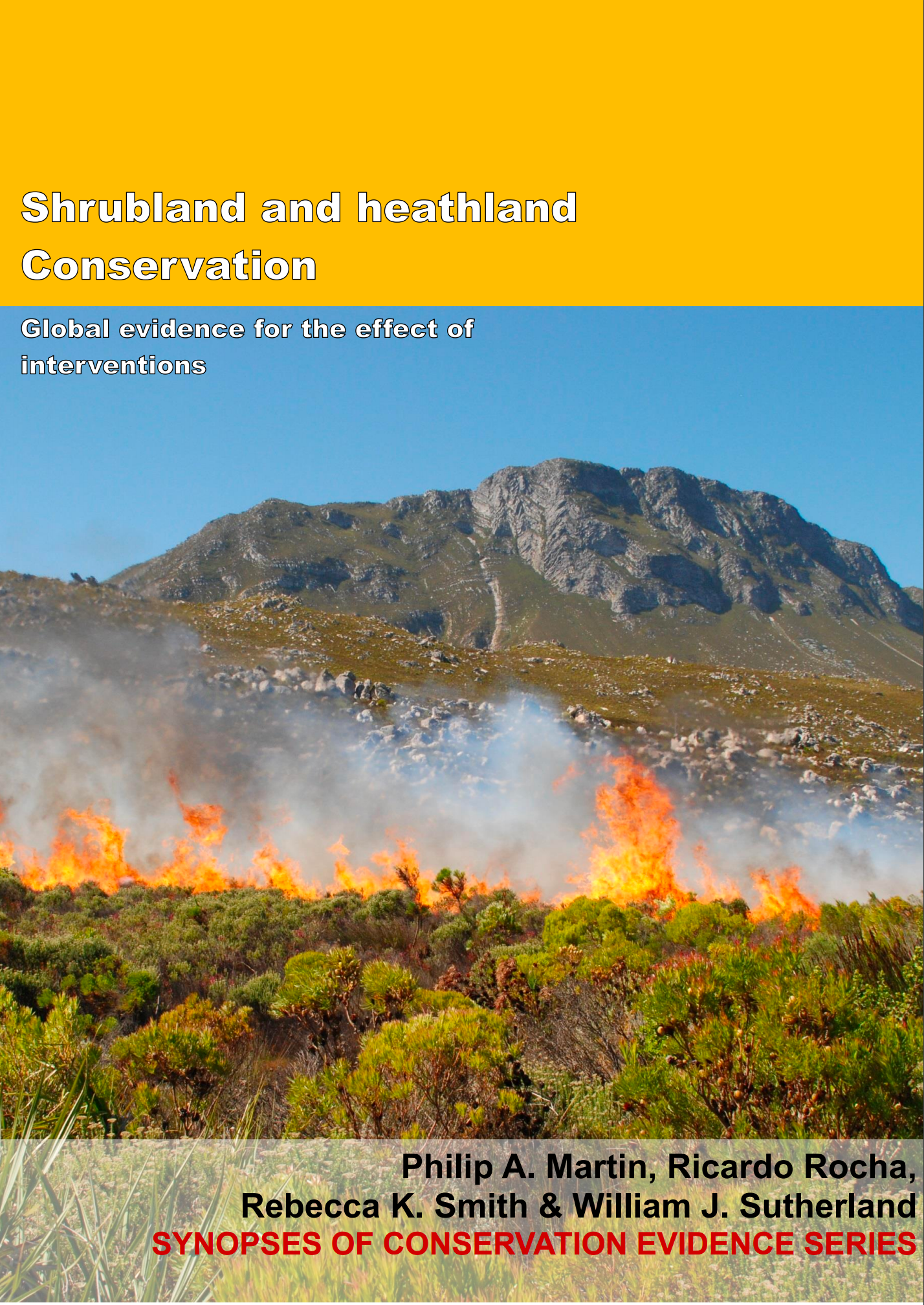Reduce numbers of large herbivores
-
Overall effectiveness category Unknown effectiveness (limited evidence)
-
Number of studies: 2
View assessment score
Hide assessment score
How is the evidence assessed?
-
Effectiveness
70% -
Certainty
30% -
Harms
0%
Study locations
Supporting evidence from individual studies
A before-and-after trial from 1980 to 2012 in coastal shrubland on Santa Cruz island, USA (Beltran et al. 2014) found that reducing grazing pressure by removing feral sheep, cattle, and horses increased shrub cover and reduced grass cover. After 20 years, cover of woody species was higher after the removal of sheep, cattle, and horses (24%) than before removal (1%), but cover of herbaceous plants did not differ significantly (after: 66%, before: 60%). Cover of bare ground was lower after the removal of sheep, cattle, and horses (9%) than before removal (39%). Sheep, cattle, and horses were removed from the island between 1981 and 1989. In 1980 and 2012 twenty 30 m transects were used to survey vegetation. Every 1 m along the transects the vegetation type was identified and cover was estimated.
Study and other actions testedA replicated study in 1991–2001 in two moorland sites in the Cairngorms, UK (Welch et al. 2006) found that reducing grazing pressure by red deer Cervus elaphus increased the cover and height of heather Calluna vulgaris. Nine years after the reduction of grazing pressure by deer, the cover of heather had increased by 6% in one site and by 2% in the other. Additionally, mean height of heather increased from 17 cm to 19 cm in one site and from 25 cm to 29 cm in the other. Deer numbers were reduced by culling and, in one site, grazing pressure was also reduced by localized winter feeding. As a result, between 1992 and 2001, the mean number of deer pellet groups on 60 m2 plots felt from 26.3 to 22.9 in one site and from 17.2 to 5.7 in the other. Sampling plots of 15 m x 4 m (90 in one site and 96 in the other) were visited annually and, at each plot, 25 measures of heather height were taken. Additionally, heather cover was measured at each plot using a sampling stick with four 8 cm diameter circles at 10 positions and by counting the circles containing heather.
Study and other actions tested
Where has this evidence come from?
List of journals searched by synopsis
All the journals searched for all synopses
This Action forms part of the Action Synopsis:
Shrubland and Heathland Conservation
Shrubland and Heathland Conservation - Published 2017
Shrubland and Heathland synopsis





)_2023.JPG)














